Recombinant Human MSH3 Protein, His-tagged
| Cat.No. : | MSH3-494H |
| Product Overview : | Recombinant human MSH3 protein with a His-tag was expressed in E. coli |
| Availability | April 28, 2025 |
| Unit | |
| Price | |
| Qty |
- Specification
- Gene Information
- Related Products
- Case Study
- Application
- Download
| Species : | Human |
| Source : | E.coli |
| Tag : | His |
| Description : | The protein encoded by this gene forms a heterodimer with MSH2 to form MutS beta, part of the post-replicative DNA mismatch repair system. MutS beta initiates mismatch repair by binding to a mismatch and then forming a complex with MutL alpha heterodimer. This gene contains a polymorphic 9 bp tandem repeat sequence in the first exon. The repeat is present 6 times in the reference genome sequence and 3-7 repeats have been reported. Defects in this gene are a cause of susceptibility to endometrial cancer. |
| Molecular Mass : | The protein has a calculated MW of 40.3 kDa. |
| AA Sequence : | MGSSHHHHHHSSGLVPRGSHMSRRKPASGGLAASSSAPARQAVLSRFFQSTGSLKSTSSSTGAADQVDPGAAAAAAAAAATAPPAPPAPAFPPQLPPHIATEIDRRKKRPLENDGPVKKKVKKVQQKEGGSDLGMSGNSEPKKCLRTRNVSKSLEKLKEFCCDSALPQSRVQTESLQERFAVLPKCTDFDDISLLHAKNAVSSEDSKRQINQKDTTLFDLSQFGSSNTSHENLQKTASKSANKRSKSIYTPLELQYIEMKQQHKDAVLCVECGYKYRFFGEDAEIAARELNIYCHLDHNFMTASIPTHRLFVHVRRLVAKGYKVGVVKQTETAALKAIGDNRSSLFSRKLTALYTKSTLIGEDVNPLIKL |
| Endotoxin : | <1 EU/μg |
| Purity : | >85% by SDS-PAGE |
| Storage : | Store it under sterile conditions at -20 to -80 centigrade. It is recommended that the protein be aliquoted for optimal storage. Avoid repeated freeze-thaw cycles. |
| Storage Buffer : | Lyophilized from sterile PBS, Ph7.4, 5% trehalose, 5% mannitol added with 0.25M Arginine |
| Gene Name | MSH3 mutS homolog 3 (E. coli) [ Homo sapiens (human) ] |
| Official Symbol | MSH3 |
| Synonyms | MSH3; mutS homolog 3 (E. coli); mutS (E. coli) homolog 3; DNA mismatch repair protein Msh3; Divergent upstream protein; DUP; Mismatch repair protein 1; MRP1; hMSH3; mismatch repair protein 1; divergent upstream protein; MGC163306; MGC163308; |
| Gene ID | 4437 |
| mRNA Refseq | NM_002439 |
| Protein Refseq | NP_002430 |
| MIM | 600887 |
| UniProt ID | P20585 |
| ◆ Recombinant Proteins | ||
| MSH3-6056Z | Recombinant Zebrafish MSH3 | +Inquiry |
| MSH3-494H | Recombinant Human MSH3 Protein, His-tagged | +Inquiry |
| ◆ Cell & Tissue Lysates | ||
| MSH3-23HCL | Recombinant Human MSH3 HEK293T cell lysate | +Inquiry |
Case 1: Tseng-Rogenski SS, et al. Mol Cell Biol. 2020
Inactivation of DNA mismatch repair promotes colorectal cancer (CRC) development. CRCs with elevated microsatellite alterations at selected tetranucleotide repeats (EMAST) exhibit reduced nuclear MutS homolog 3 (MSH3) expression, inflammation, and poor patient outcomes. MSH3 relocates from the nucleus to the cytosol in response to interleukin-6 (IL-6), suggesting a shuttling role. Researchers manipulated three nuclear localization signals (NLS1 to -3) and two nuclear export signals (NES1 and -2) within MSH3. NLS1 and NLS2 facilitate nuclear import, with NLS1 crucial for full-length MSH3. NES1 and NES2 enhance nuclear export, both essential for IL-6-induced MSH3 export. A common 27-bp deletion (Δ27bp) in polymorphic exon 1 near NLS1 causes cytoplasmic localization of MSH3 under oxidative stress, compromising NLS1 function.
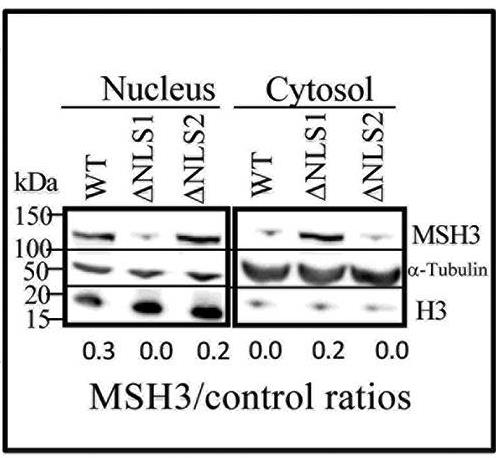
Fig1. NLS1 is the bona fide signal directing MSH3 nuclear localization.
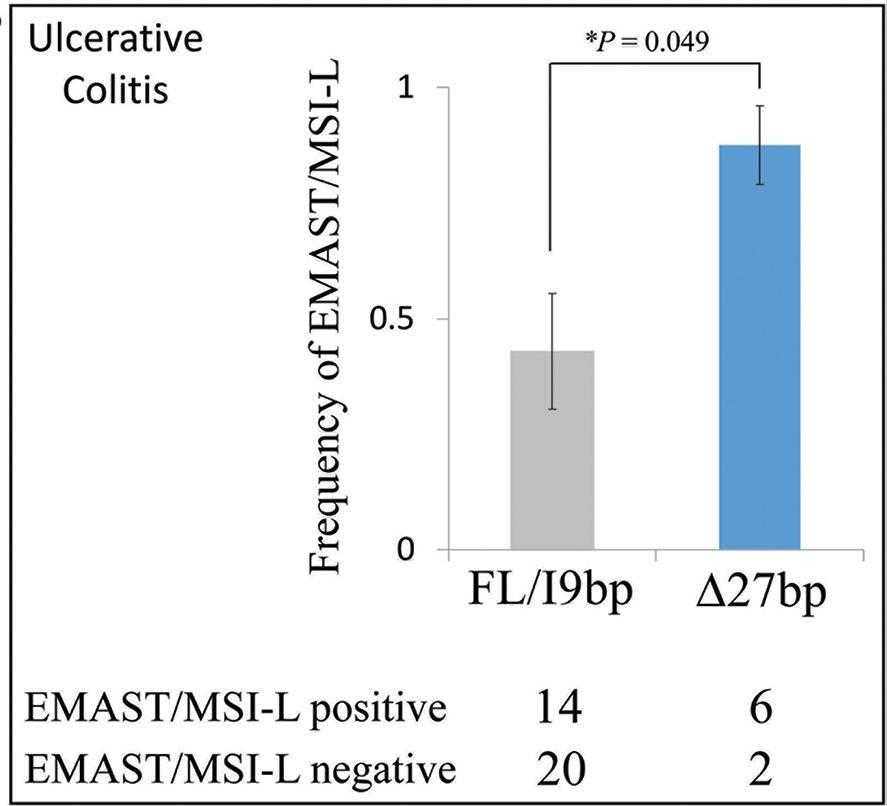
Fig2. Eight of 42 UC samples (19%) genotyped for Δ27bp MSH3, with 6 of 8 (75%) associated with EMAST detected in the UC tissue.
Case 2: Park JM, et al. PLoS One. 2013
MSH3, a DNA mismatch repair gene, is often mutated in colorectal cancers (CRCs) and forms part of the MutSβ complex that responds to DNA damage from drugs like cisplatin. Researchers investigated how MSH3 affects cancer cell response to chemotherapy using HCT116 cells with restored MLH1 and MSH3. MSH3 deficiency increased sensitivity to SN-38 and oxaliplatin, but not 5-FU, and this effect was independent of MLH1 status. MSH3-deficient cells also showed heightened DNA damage and apoptosis after treatment with these drugs. Furthermore, MSH3 appears to regulate DNA double-strand break repair, as its deficiency led to increased 53BP1 foci after irradiation. Combining the HDAC inhibitor PCI-24781 with oxaliplatin significantly increased cytotoxicity, suggesting that MSH3's role in DNA repair pathways can be targeted to enhance chemosensitivity.
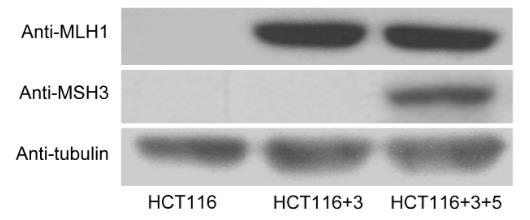
Fig1. Western blot analysis of MSH3, MLH1, and tubulin in HCT116, HCT116+3, and HCT116+3+5 cells.
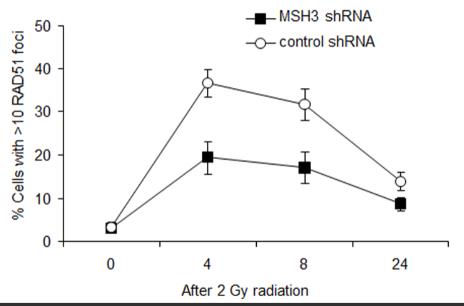
Fig2. HCT116+3+5 cells with control or MSH3 shRNA were irradiated (2 Gy) and then probed with an anti-RAD51 antibody.
Recombinant human MSH3 protein is an important DNA repair related protein, belonging to the MutS homologous protein family. It is biologically involved in the DNA mismatch repair (MMR) system, especially in the formation of the MTS-β complex with MSH2, which recognizes and repairs mismatch bases produced during DNA replication. In addition, MSH3 is involved in the repair of double-strand breaks (DSB) and maintains genomic stability by homologous recombination mechanisms.
In terms of practical applications, the study of MSH3 protein and its mutants contributes to our understanding of the pathogenesis of many types of cancer, especially tumors associated with defects in DNA repair. For example, dysfunction of MSH3 has been associated with hereditary non-polyposis colorectal cancer (Lynch syndrome). In addition, the expression level and activity of MSH3 protein may be used as biomarkers for the early diagnosis of cancer and the monitoring of treatment response.
In the field of drug development, the MSH3 protein is also a potential drug target, and drugs targeting its function may be effective in treating certain types of cancer. Studying the structure and function of MSH3 protein and how it undergoes cytoplasmic shuttling in response to inflammatory signals such as IL-6 has important implications for developing new therapeutic strategies.
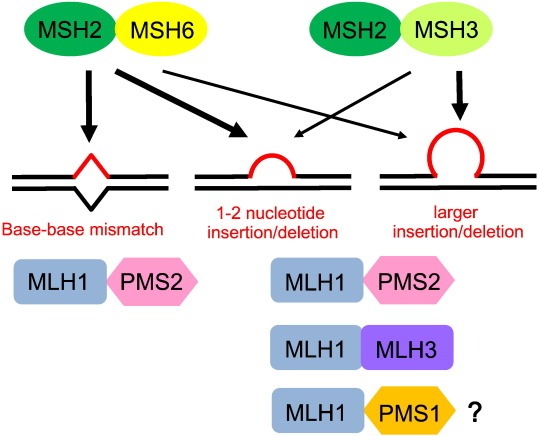
Fig1. Models of human DNA mismatch recognition. (Yoshinao Muro, 2015)
Not For Human Consumption!
Inquiry
- Reviews
- Q&As
Ask a Question for All MSH3 Products
Required fields are marked with *
My Review for All MSH3 Products
Required fields are marked with *
Inquiry Basket


